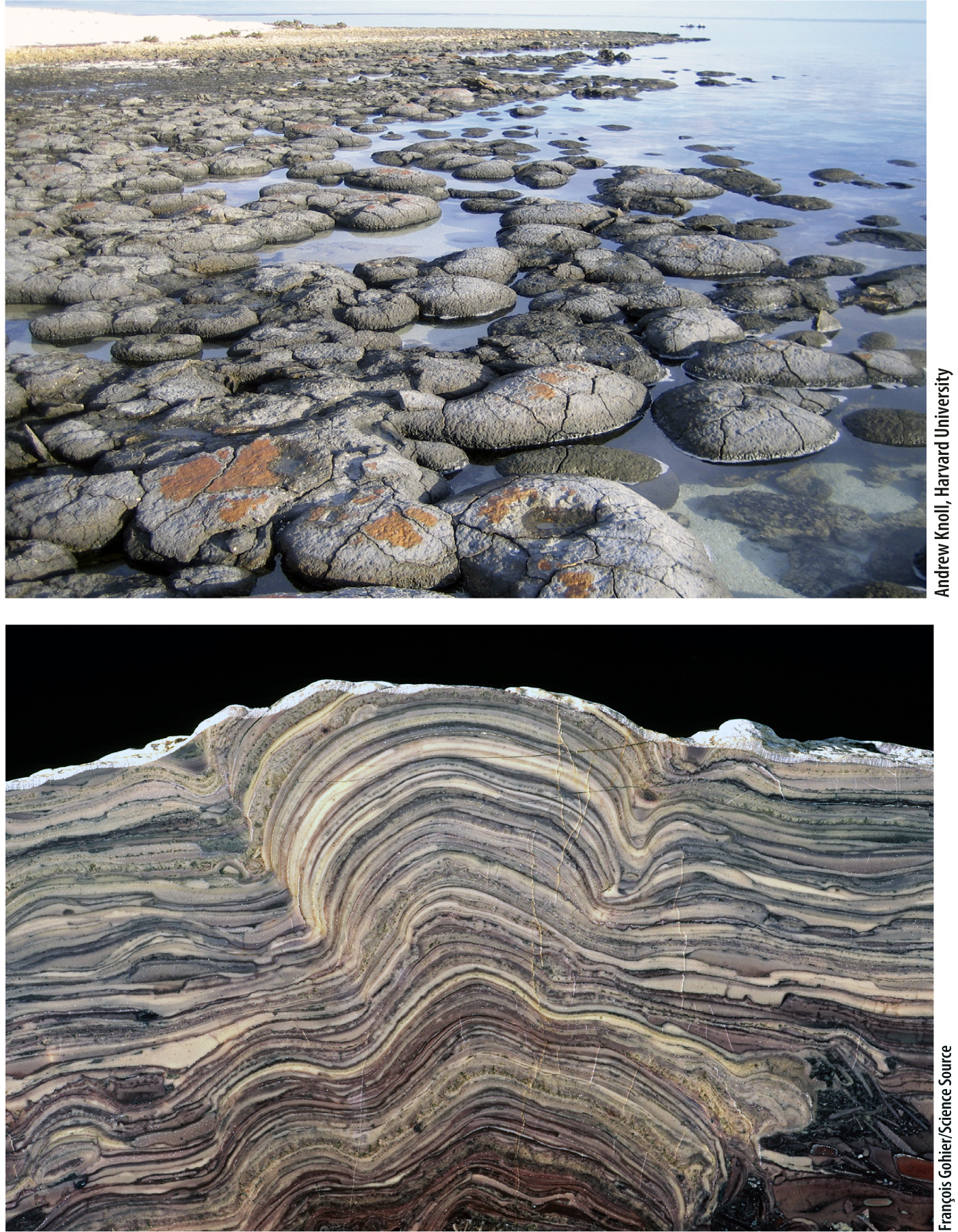26.6 The Evolutionary History of Prokaryotes

FIG. 26.20 Bacterial microfossils. (a) Bacteria that probably metabolized iron in 1.9-billion-year-old rock from the Gunflint Formation in northwest Ontario, Canada. (b) Cyanobacteria preserved in 800-million-year-old silicified marine carbonates from the Draken Formation in Spitsbergen, Norway. (c) A short cyanobacterial filament from silicified tidal flat carbonates of the 1.5-billion-year-old Bilyakh Group in northern Siberia.
On the tree of life, the plants and animals of our familiar existence populate only the most recent branches. For most of Earth’s history, life was entirely microbial. Perhaps surprisingly given their small size, Bacteria and Archaea have left a fossil record that allows paleontologists to reconstruct aspects of life’s early evolution. Sedimentary rocks preserve microscopic fossils of ancient bacteria, including the photosynthetic cyanobacteria (Fig. 26.20). Limestones and related rocks also preserve stromatolites, layered structures that record sediment accumulation by microbial communities (Fig. 26.21). Some especially well preserved ancient rocks also contain molecular fossils—biomolecules, usually lipids, that resist decay and so preserve a chemical signature of ancient life.

FIG. 26.21 Stromatolites. Modern-day stromatolites at Shark Bay, Western Australia (top) show microbial communities building the domed structures exhibited by stromatolites in ancient rocks (bottom). Stromatolites are among the earliest records of life on Earth.

